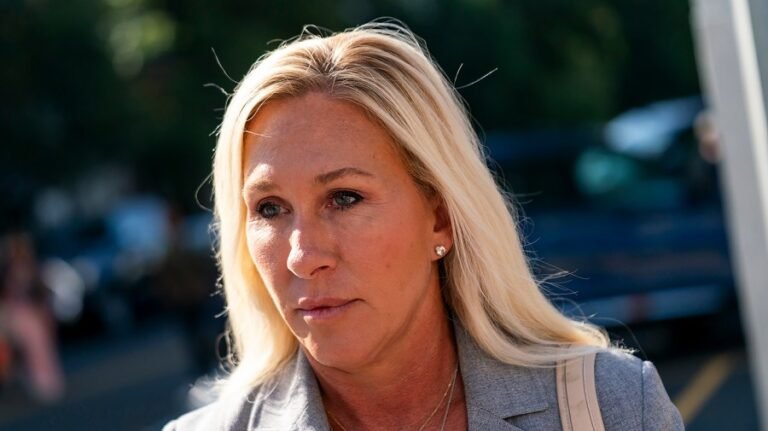
“This took 3,000 years to get to this point,” President Trump proclaimed last month as he heralded the agreement for a ceasefire in Gaza and the return of the last Israeli hostages. It was indeed a significant agreement, a long time coming. But whether it was an achievement for the ages will depend on what comes next.
Will the agreement hold, and might it then lead to a lasting solution to the Israeli-Palestinian conflict?
An important goal of Hamas’s brutal attacks of Oct. 7, 2023, was to derail the possibility, however remote, of a Palestinian State led by its rival, a reformed Palestinian Authority. The Biden was trying normalize relations between Israel and Saudi Arabia, and it might have led to such an outcome.
The main reason this possibility was remote? Israel’s prime minister, Benjamin Netanyahu, while desiring Saudi normalization to cap off the 2020 Abraham Accords, was even more opposed to the Palestinian self-determination that the Saudis were likely to demand as a condition of joining.
Netanyahu had long made a practice of painting the Palestinian Authority with the same brush as Hamas, making certain he had no “partner for peace.” By the same token, he tolerated the control of Gaza by the Palestinian Authority’s archrival, approving cash payments by Qatar to Hamas beginning in 2018 and turning a blind eye to Hamas’s murderous intent.
The attacks by Hamas, and Israel’s massive retaliation, did indeed upend any near-term prospect for Israeli-Saudi normalization. But they have also made it much more difficult for the Saudis to agree to any plan that does not provide a credible path to Palestinian self-determination. The prospect for Palestine concerns Trump less than it did Biden and his predecessors — yet it has not entirely receded from view.
Israel made a fateful overreach on Sept. 9, 2025, when it conducted an airstrike on a residential compound in Qatar, attempting to assassinate Hamas leaders who were there to negotiate a Gaza ceasefire and the return of Israeli hostages. The U.S. had encouraged the negotiations, and Trump had cultivated a strong relationship with Qatar and other Gulf states, which took grave offense at Israel’s actions. Trump, who had largely given Netanyahu a green light despite Gaza killings approaching 70,000, became newly serious about the war he had long promised to end.
One of his first moves was to assure Arab leaders that he would not “allow” Israel to annex the West Bank — something right-wing Israelis had long sought as the final nail in the coffin of the two-state solution. He then put forward the 20-point peace plan that became the basis for the ceasefire. Its original provisions regarding Palestinian self-determination were weakened further to accommodate Netanyahu. But vague provisions remain for the Palestinian Authority’s eventual assumption of governing responsibility in the West Bank and Gaza, after a transition under a “technocratic, apolitical” Palestinian committee under international supervision. After that, the plan holds out hope that “a credible pathway to Palestinian self-determination and statehood” might emerge.
The Trump plan is weak compared to the New York Declaration spearheaded by France and Saudi Arabia and adopted by the United Nations General Assembly in September. Like Trump’s plan, the declaration calls for disarming Hamas and its exclusion from governance in Gaza. But it has much stronger provisions for “mutual recognition … among all states in the region,” the reform and strengthening of the Palestinian Authority, and the empowering of a viable Palestinian state “living side by side, in peace and security with Israel.”
The immediate task is to maintain the ceasefire and to feed and stabilize Gaza. The challenges are already apparent, with Hamas carrying out public executions of accused collaborators and Netanyahu slowing the flow of aid and reserving the right to resume hostilities. Former Israeli envoy Nimrod Novik was prescient: “All you need is a Hamas provocation and a disproportionate Israeli response, and you have a spiral.”
This materialized on Oct. 19 when two Israeli soldiers were killed and the Israelis responded massively, killing 44. A similar scenario unfolded on Oct. 28, when the killing of a soldier prompted Israeli attacks that resulted in 104 dead. But if the broader ceasefire holds, the multinational security force is put in place, the rebuilding of Gaza begins, and the transitional government begins to function, the day may arrive when Saudi-Israeli normalization and long-term alternatives to perpetual Israeli-Palestinian conflict might again be pursued.
Trump has a grandiose sense of his role in this future endeavor. “I’m not [now] talking about a single state or double state,” he has said. “…At some point I’ll decide what I think is right.” This is encouraging, however, in that it suggests an awareness of the critical role the U.S. must play from this day forward. It is not a role for only one man: It will require creative, dedicated diplomacy and the assembling of diverse partner states, but it is an effort the U.S. is uniquely situated to convene and propel forward.
David E. Price represented North Carolina’s 4th District in the U.S. House 1987-94 and 1997-2022. He chaired the House Democracy Partnership and served on the State and Foreign Operations Appropriations subcommittee. He is professor emeritus of political science and public policy at Duke University.


